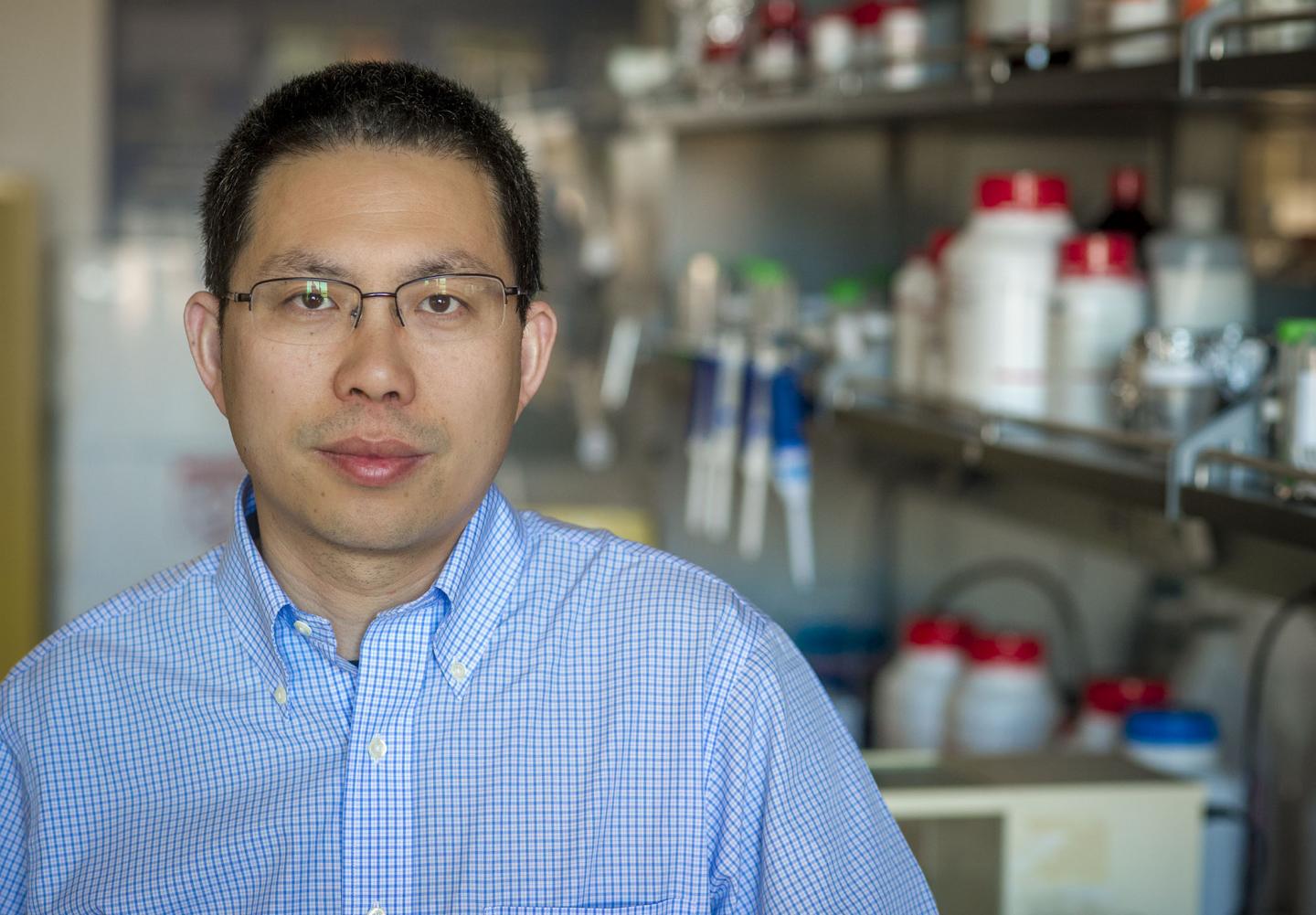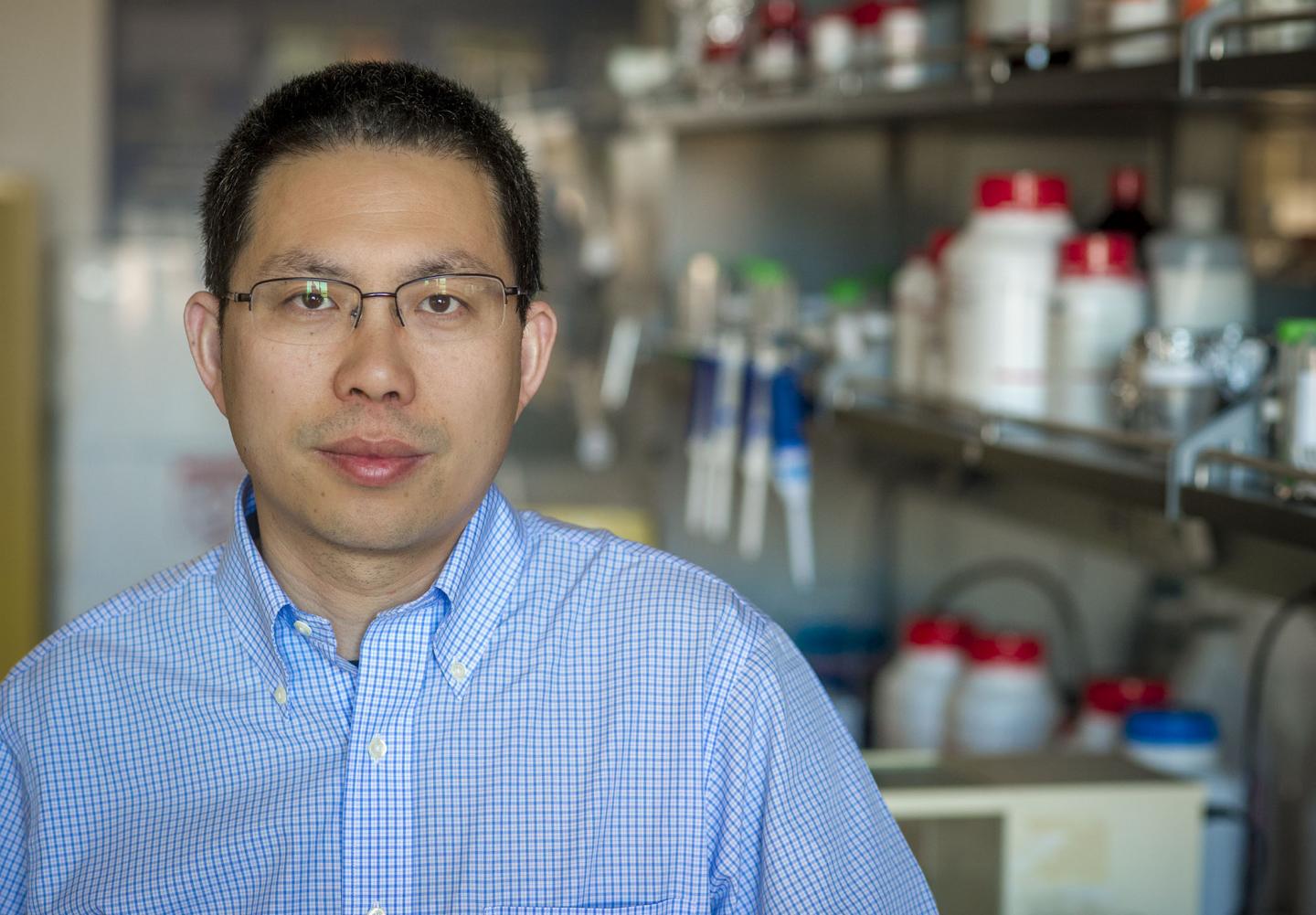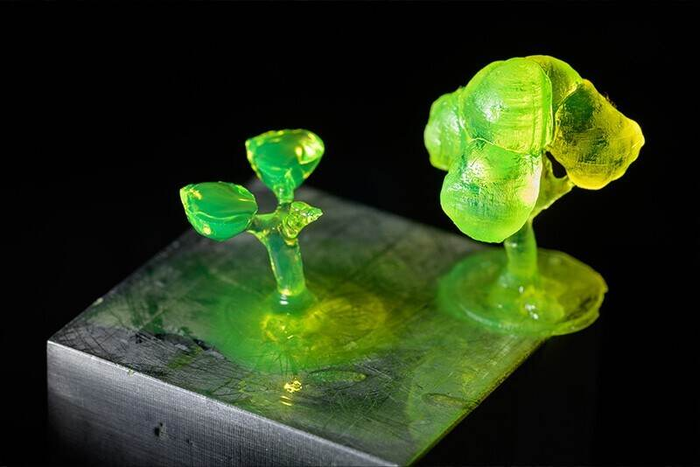
Credit: UTA
An engineer at The University of Texas at Arlington has been awarded a $211,000 R21 grant from the National Institutes of Health to develop materials that will allow doctors to use a 3-D printer to create unique new blood vessels for children with vascular defects.
Vascular defects in children, which may cause congenital heart defects, are difficult to be treated with the same methods used in adults. Common treatments such as grafts are not ideal because grafts do not grow at the same rate as a child's body and multiple surgeries are necessary to match that growth.
Also, there is a high risk of thrombosis, which must be treated with anti-coagulant drugs, which are not compatible with the active lifestyle of a normal child. Current tissue-engineered blood vessels are very fragile and cannot withstand blood pressure and the stresses of implantation surgery.
Yi Hong, an assistant professor in the Department of Bioengineering, will develop materials that can be used in a 3-D printer, are elastic and can be formed into viable, patient-specific blood vessels.
His partner, Guohao Dai of Northeastern University, will use Hong's materials to print the blood vessels. The duo will mix cells and Hong's materials together to print a conduit, which can then be attached to natural blood vessels, reducing the need for surgical manipulation.
"Our research is mainly focused on the primary techniques. It is unique and could be far-reaching because we are developing elastic materials for 3-D printing," Hong said.
"There are great possibilities from this research, which is a broad look at the possibility of tissue-engineering a blood vessel. Other groups are investigating 3D printed tissue-engineered blood vessels for use in bypasses or in the abdominal wall, but they do not have the proper bioinks. These are the major parts that will be needed for success in those areas."
Michael Cho, chair of the College of Enginering's Bioengineering Department, says that Hong's grant underscores the University's emphasis on health and the human condition contained within the Strategic Plan 2020: Bold Solutions | Global Impact.
"The development of new blood vessels, has been a daunting challenge in tissue engineering," Cho said. "Dr. Hong's approach to applying bioinks in printing engineered blood vessels is not only innovative, but offers a feasible alternative to overcome the challenges involved. With respect to clinical application, I have no doubt Dr. Hong will contribute significantly to regenerative medicine where progress has been hampered by an inability to introduce blood vessels into engineered tissues."
###
Hong joined the UTA Department of Bioengineering in 2012. He has been the primary investigator on research grants totaling more than $850,000 since beginning his career, including a CAREER Award from the National Science Foundation to develop a polymer that will allow engineers to develop a scaffold that is flexible, conductive and biodegradable for biomedical applications such as tissue repair. He also won an American Heart Association grant to develop a bioactive heart patch that will help restore heart function after a heart attack.
Hong's research interests include functional biomaterials, tissue engineering, medical devices and drug delivery. He holds eight patents and has authored or co-authored more than 50 journal articles. He is a member of the Tissue Engineering and Regenerative Medicine International Society, the American Heart Association, the Biomedical Engineering Society and the Society for Biomaterials.
He earned his doctoral degree at Zhejiang University in 2005 and was a post-doctoral associate and research assistant professor at the University of Pittsburgh's McGowan Institute for Regenerative Medicine, where he received PITT Innovator Awards in 2009 and 2010.
About The University of Texas at Arlington
The University of Texas at Arlington is a Carnegie Research-1 "highest research activity" institution. With a projected global enrollment of close to 57,000, UTA is one of the largest institutions in the state of Texas. Guided by its Strategic Plan 2020 Bold Solutions|Global Impact, UTA fosters interdisciplinary research and education within four broad themes: health and the human condition, sustainable urban communities, global environmental impact, and data-driven discovery. UTA was recently cited by U.S. News & World Report as having the second lowest average student debt among U.S. universities. U.S. News & World Report lists UTA as having the fifth highest undergraduate diversity index among national universities. The University is a Hispanic-Serving Institution and is ranked as the top four-year college in Texas for veterans on Military Times' 2017 Best for Vets list.
Media Contact
Louisa Kellie
[email protected]
817-524-8926
@utarlington
http://www.uta.edu
############
Story Source: Materials provided by Scienmag






